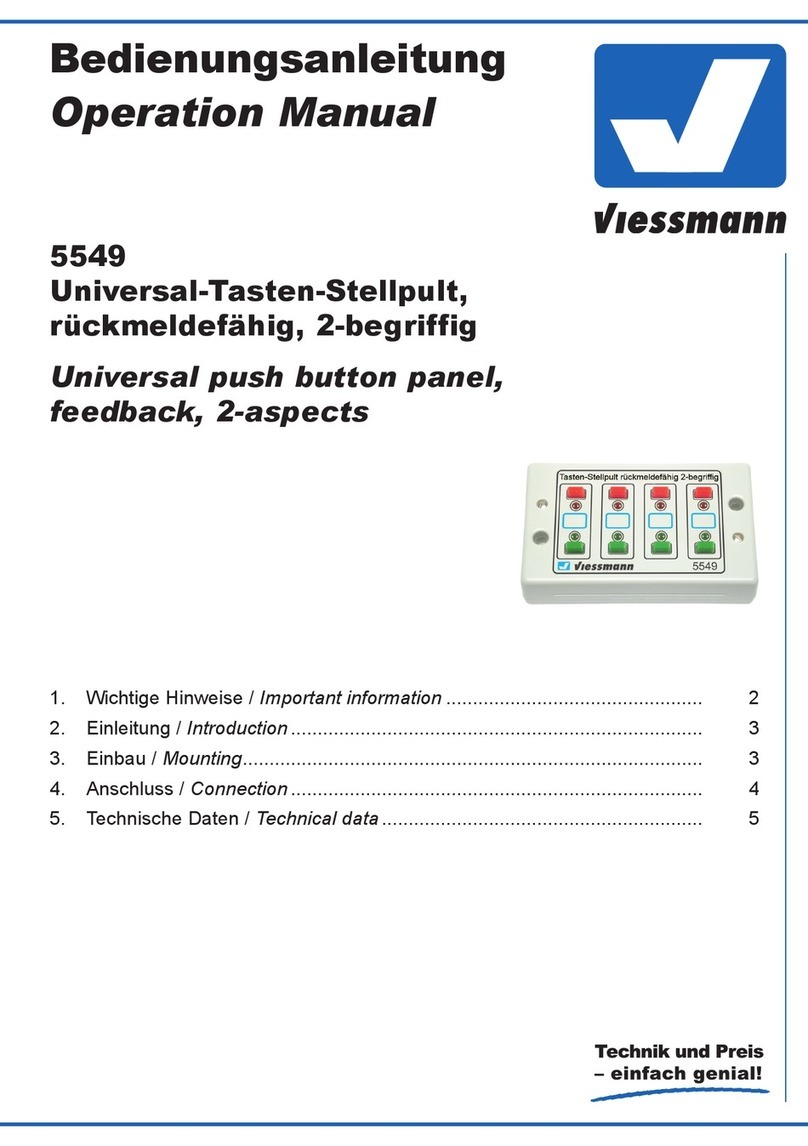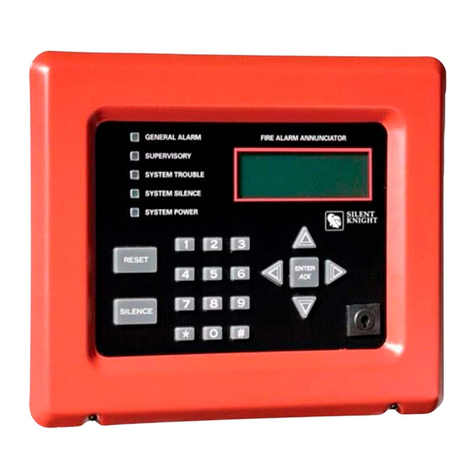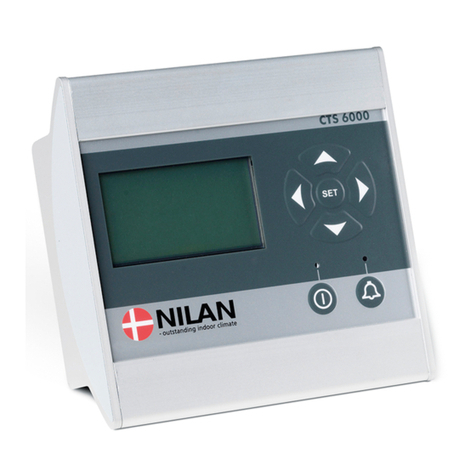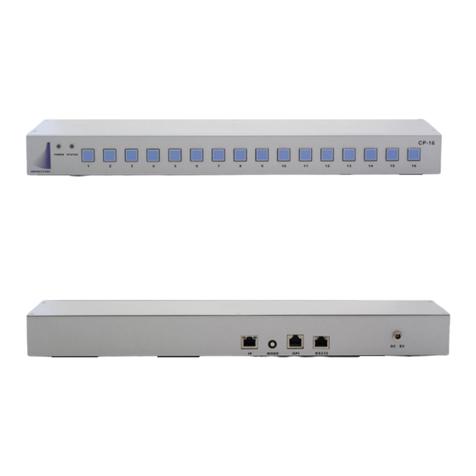DIGITAL DELAY Crossover Plus SCR User manual

1
2036 Fillmore Street
Davenport, Ia. 52804
563-324-1046
www.racedigitaldelay.com
1020-scr
WARRANTY AND DISCLAIMER
DIGITAL DELAY INC. WARRANTS THE PRODUCTS IT
MANUFACTURES AGAINST DEFECTS IN MATERIALS AND WORKMANSHIP
FOR A PERIOD LIMITED TO 1 YEAR FROM THE DATE OF SHIPMENT,
PROVIDED THE PRODUCTS HAVE BEEN STORED, HANDLED, INSTALLED,
AND USED UNDER PROPER CONDITIONS.
The company’s liability under this limited warranty shall extend only to the
repair or replacement of a defective product, at the company’s option. DIGITAL DELAY
INC. disclaims all liability for any affirmation, promise, or representation with respect to
the products.
The customer agrees to hold DIGITAL DELAY INCORPORATED harmless
from, defend, and indemnify DIGITAL DELAY INC. against damages, claims, and
expenses arising out of subsequent sales of or use of DIGITAL DELAY INC. products, or
products containing components manufactured by DIGITAL DELAY INC. and based
upon personal injuries, deaths, property damage, lost profits, and other matters which
BUYER, its employees, or sub-contractors are or may be to any extent liable, including
without limitation, penalties imposed by the Consumer Product Safety Act (P.L. 92-573)
and liability imposed upon any person pursuant to the Magnuson-Moss Warranty Act (P.L.
93-637), as now in effect or as amended hereafter.
No warranties expressed or implied, are created with respect to the company’s
products except those expressly contained herein. The customer acknowledges the
disclaimers and limitations contained and relies on no other warranties or affirmations.

2
2036 Fillmore Street
Davenport, Ia. 52804
563-324-1046
www.racedigitaldelay.com
Crossover Plus SCR
Part # 1020-SCR
Instructions
The Crossover Plus is the latest in a full line of electronic racing products from
Digital Delay, Inc.. Designed to be more reliable and user friendly than any other multi-
function delay box on the market. The Crossover Plus has a 12 digit keypad for fast and
precise entry of information into the unit while a single illuminated multi-segment liquid
crystal display is used to display all relative information.
Contents:
Warranty and Disclaimer................................................................... Page 1
Features, Applications, and Specifications............................……….Page 3
Quick Reference Diagram.................................................................. Page 4
The Terminal Strip..............................................................................Page 5
The Display.........................................................................................Page 6
Setting the Back-light Intensity.................................................……..Page 6
The Keypad.........................................................................................Page 7
Setting Dial-Ins and Delay Times...............................................…...Page 8
Setting the Recovery Time................................................................ Page 8
How the Recovery Works.................................................................. Page 8
How Late............................................................................................ Page 9
Tap Up/Down..................................................................................... Page 9
Setting Push Button Mode and Interrupt Time.....................……….Page 9
Wiring and Testing the Unit............................................................. Page 10

3
Features, Applications, and
Specifications
Features:
• Discrete solid state I/O (input - output) construction
• Microprocessor controlled timing with accuracy to 0.0001 of a second
• Retains all numbers even when power is disconnected from the unit
• Large display for easy reading of times
• Low voltage warning and full status indication
• Illuminated liquid crystal display for both day and night use
• Dust & splash proof display lens & key pad with detent (positive feel)
• 1 or 2 pushbutton, bumb up or down, and recovery
• Easy and fast selection or entry of all information even with gloves
• Self test mode on all display functions
• Programmable back-light intensity control
• Very high Transbrake current output (20 Amps)
• Instant timing cycle reset
••••••••••••••••••••••••••••••••••••••••••••••••••••••••••
Applications:
• Controls Transbrake Solenoids
• Controls 2, 3 and 4-Stage Timers
• Controls 2-Steps
••••••••••••••••••••••••••••••••••••••••••••••••••••••••••
Specifications:
•Input Voltage Range: 10 to 16 Volts DC
•Dial-In Time Range: 00.00 to 99.99 seconds in .01 increments
•Delay Time Range: 0.000 to 9.999 seconds in .001 increments
•Flinch Time Range: 0.000 to 0.999 seconds in .001 increments
•Push Button Input Current Draw: 0.1 Amps. at 12 Volts
• Transbrake Output Current: 20 Amps.
•Operating Temperature Range: 0 to 150 degrees F

4

5
The Terminal Strip
+12VDC Terminal: Connect the +12VDC terminal to a switched +12
Volt source with enough amperage capable of driving the transbrake.
(Using an in-line fuse just large enough to handle the current draw
of the transbrake solenoid, normally 15 Amps., is recommended.)
Transbrake Terminal: Connect the Transbrake terminal to the
Transbrake solenoid. Connect the low side of the 2-Step, the red
wire, here if used.
When entering new information into the unit, there
must be a number (0-9) in every valid space on the
display or the transbrake terminal will not function.
Ground Terminal: Connect the Ground terminal to the Neg. terminal
on the battery or to a good steel ground, not aluminum.
Button-1 Terminal: In single Push Button Mode the push button
connected to Button-1 terminal is used to control the primary
delay and the secondary delay in sequence. In dual Push Button Mode
the push button connected to Button-1 terminal is used to control
the primary delay only.
Button-2 Terminal: In single Push Button Mode the push button
connected to Button-2 terminal is used to control the recovery
if turned on. In dual Push Button Mode the push button connected to
Button-2 terminal is used to control the secondary delay only.
Tap Terminal: If taping up or down is desired connect a push
button to the Tap terminal. This allows you to subtract or add a
programmable amount of time from the first delay time started
every time the Tap Push Button is depressed.
Note: In single Push Button Mode the Tap Up or Down only affects the
primary delay and has no effect on the secondary delay.

6
The Display
The display on the Crossover Plus is used to display all of the information that is stored in
memory, as well as information entered on the keypad. There are eight red L.E.D.s to the left of the key
pad. Starting from the top and going down the text that is to the right of the last lit L.E.D. corresponds to
the information being shown on the display. For example if the last L.E.D. lit is next to the text “How
Late” (#5) the Display would be showing the How Late information.
Other special functions of the display are:
Low Voltage Indication: The numbers on the display will flash
when voltage to the unit is below the recommended minimum of
11.5 Volts.
Transbrake-Colons: When the transbrake is engaged the colon
will turn on. When the delay timer starts counting down the
colon will flash.
Recovery Arrow: When the Recovery information is being
displayed, and the arrow is shown the Recovery is on. If the
arrow is not being displayed the Recovery is off.
Tap Arrow: When the Tap information is being displayed and
the arrow is shown, the unit is set in tap up mode. If the arrow is
not shown the unit is in tap down mode.
Decimal Point: When displaying times, the decimal point will move to
the correct position for the time displayed. When displaying Tap
Control or Push Button mode information the decimal point will not
be displayed.

7
Setting the Back-light Intensity
To set the back-light Intensity press the 9 key on the keypad. The left most digit will show the
current setting. To change the setting, press the * key on the keypad followed by the new setting (1-9).
The smaller the number, the dimmer the back-light will be.
The Keypad
The keypad is made up of 12 keys, 10 numerical and 2 function keys, that control all the
information pertaining to the Crossover Plus. The numerical keys 1-9 are used to view information stored
in memory. Also when used in conjunction with the function key * the numerical keys 0-9 are used to
enter new information. The function key # has three separate functions described below.
Selecting Displayed Information
The numerical keys1-9 are used with the text next to the small red L.E.D.s to select the displayed
information. This is done by pressing the number on the keypad that corresponds to the number for the
text of the desired information. For example, to display the “Delay 1 time” the 3 key would be depressed.
Pressing the 9 key will turn off all the red L.E.D.s and bring up the back-light intensity setting.
Function Key *
The function key * is used with the numerical keys for entering new times or modes. For example
to enter a new Delay 1 Time, first press the 3 key on the keypad to bring up the current stored Delay 1
Time. Next press the * key on the keypad, the display will go blank indicating it is ready to accept a new
Delay 1 Time. Use the numerical keys to enter the new Delay 1 Time into the unit, leading zeros must be
entered. As the numbers are entered they will appear on the display indicating the number was accepted
and stored into memory. Once a new value is started it must be completed before any other function of
the delay box will work.
If an error is made while entering, press the * key to erase the last digit entered. This can be
repeated as many times as necessary until the display is blank.
Function Key #
The function key # controls three separate functions.
1) If pressed during a delay cycle, the delay cycle will be cancelled
and the unit will be reset. This constitutes a master reset for the
delay cycle.
2) If pressed while the unit is not running a delay cycle,“Their Dial-In”
will be displayed and set to all zeros, making sure the next run is
not on the previous opponent’s Dial-In.
3) If the # key is held down while the power is being turned on, the unit
will go into a special test mode. This is described in Testing of the Unit.

8
Setting Dial-In and Delay Times
To enter a new Dial-In or Delay Time, first press a numerical key
(1-4) on the keypad to bring up the current stored time. Then press the * key on the keypad. The display
will go blank indicating it is ready to accept a new time. Next use the numerical keys to enter the new
four digit time into memory, leading zeros must be entered. As the numbers are entered they will appear
on the display indicating the number was accepted and stored into memory. Once the * key is pressed all
four digits must be entered before any other function of the delay box will work.
If an error is made while entering, press the * key to erase the last digit entered. This can be
repeated as many times as necessary until the display is blank.
Setting the Recovery
To enter a new Recovery Time, first press the 8 key on the keypad to bring up the current
Recovery Time stored in memory. Then press the * key on the keypad. The display will go blank
indicating it is ready to accept a new time. Next use the numerical keys to enter the new three digit time
into memory, leading zeros must be entered. As the numbers are entered they will appear on the display
indicating the number was accepted and stored into memory. At any time after pressing the * key and
before entering the third digit, pressing # will either turn on the Recovery along with the arrow in the
display or turn both off. Once the * key is pressed all three digits must be entered before any other
function of the delay box will work..
If an error is made while entering, press the * key to erase the last digit entered. This can be
repeated as many times as necessary until the display is blank.
How the Recovery Works
For the Recovery to work, the Crossover Plus must be in Single Push Button mode with the
Recovery turned on and have a push button connected to the Second Push Button Terminal. If the
Recovery is on and the push button connected to the Second Push Button terminal is pressed, after the
primary delay or secondary delay was started and before the Transbrake has released both the primary and
secondary delays will be canceled. When the push button is then released the Recovery time starts
counting down to zero. When the count reaches zero the transbrake will be released.

9
How Late
To display the How Late information press the 5 key on the keypad. The right three digits display
the How Late time. The left most digit will display an “8” if the transbrake released on Delay-2 (4-Digit).
The left most digit will be blank if the transbrake released on Delay-1 (Crossover). For example if the
number displayed is “8.012” and your reaction time was .510 on the time slip, add the How Late time to
the .510 for a total reaction time of .522 on the crossover delay.
Tap Up/Down
To display the Tap information press the 6 key on the keypad. The left most digit shows the
programmable time (1 to 9 hundredths of a second) to be added to, or subtracted from the delay time
every time the Tap push button is pressed. The right two digits show the number of times the Tap push
button was pressed the last time it was used during a timing cycle. The Tap time will only affect the first
delay time started. To change the programmable time press the * key on the keypad. The left most digit
will now be blank and the unit can be switched between the Tap Up and Tap Down modes by pressing the
# key (arrow on means uump up, no arrow means tap down). After selecting the desired Tap Up or Down
mode enter the new number (1-9) for the programmable time.
NOTE: Both How Late and Tap information are stored in memory
until a new How Late or the Tap number replaces it.
Setting Push Button Mode and the
Push Button Interrupt Time
To set the Push Button Mode press the 7 key on the keypad. The left most digit will be either a
“1” or “2” to indicate which Push Button Mode the unit is in, when in Single Push Button Mode, the First
P.B. starts both the primary and secondary delays. When in dual Push Button Mode, one or both push
buttons can be used in any sequence. The First P.B. starts the primary delay and Second P.B. starts the
secondary delay. The two right digits show the programmable amount of time (00 to 99 seconds) that
after the transbrake releases, First P.B. and Second P.B. push button inputs are disabled. To change either
the Button Mode or the Interrupt Time first press the * key, then enter a “1” or “2” for the Push Button
Mode followed by a two digit number representing the Push Button Interrupt Time. For example “1 10”
would indicate single Push Button Mode with a 10 second Interrupt Time. If no Push Button Interrupt
Time is wanted, after pressing a “1” or “2” for the Push Button Mode enter “00” for the interrupt time.

10
This manual suits for next models
1
Table of contents
Other DIGITAL DELAY Control Panel manuals
Popular Control Panel manuals by other brands
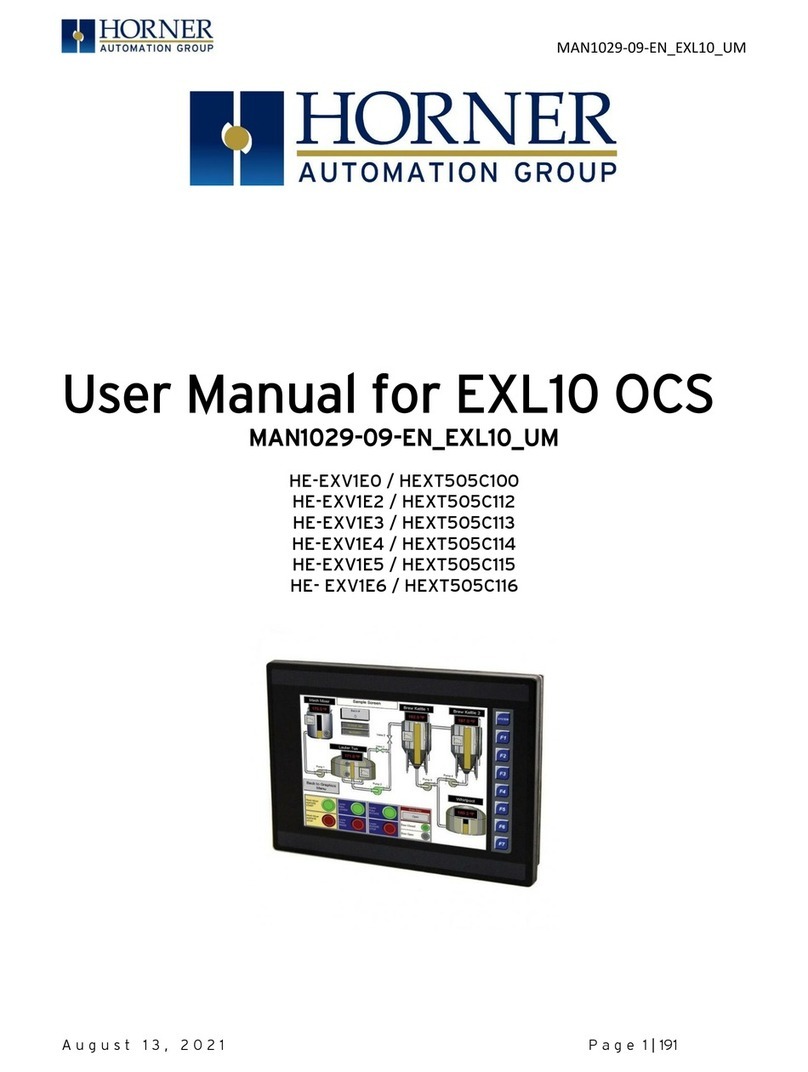
HORNER
HORNER EXL10 OCS user manual
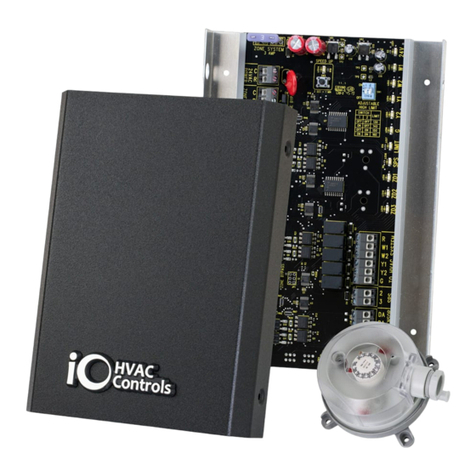
iO HVAC Controls
iO HVAC Controls ZP3-HCMS-ESP Installation and operation instruction

See Water
See Water WS1P-TP-1001 Installation and operation manual

EL.MO. Spa
EL.MO. Spa TA4000 user manual
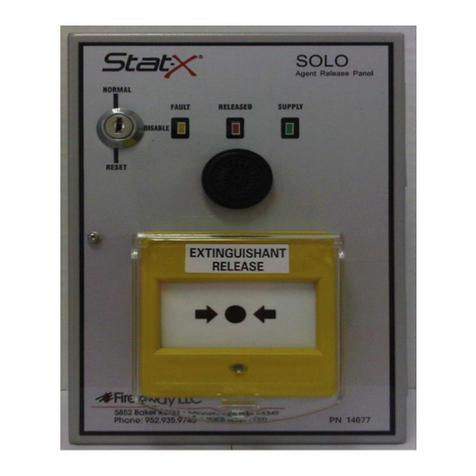
Stat-X
Stat-X SOLO O & M Manual

ActronAir
ActronAir CL01-2W installation instructions

Zehnder Rittling
Zehnder Rittling ComfoLED Installation notes

CAME
CAME ZL19N installation manual
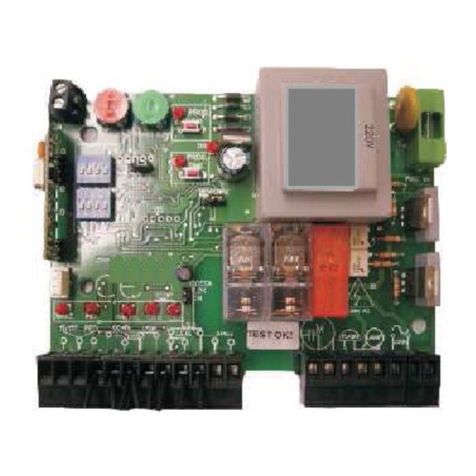
quiko
quiko QK-CE220BASC instruction manual
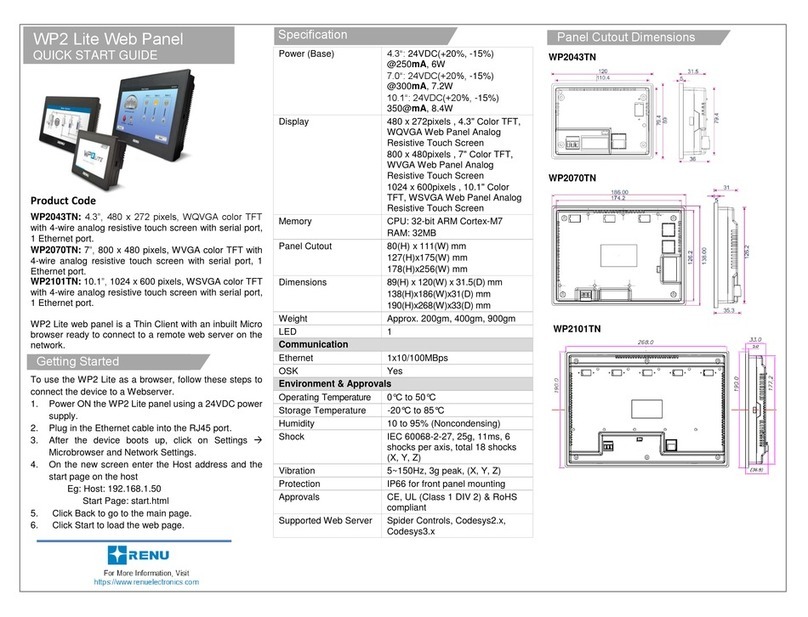
Renu Electronics
Renu Electronics WP2 Lite Series quick start guide
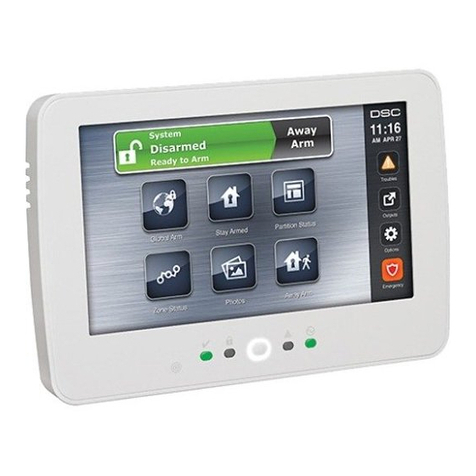
Johnson Controls
Johnson Controls Tyco PowerSeries Pro HS2TCHPRO installation instructions
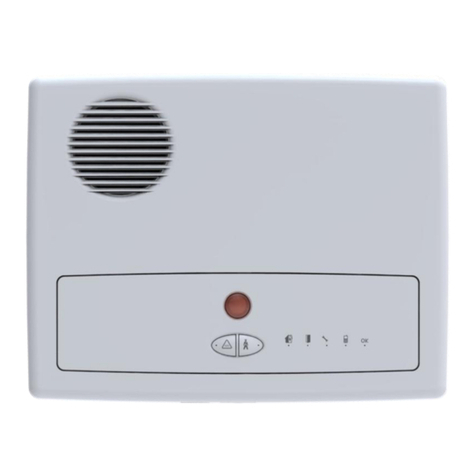
Essence Security
Essence Security EverGuard ES7000EG user guide

